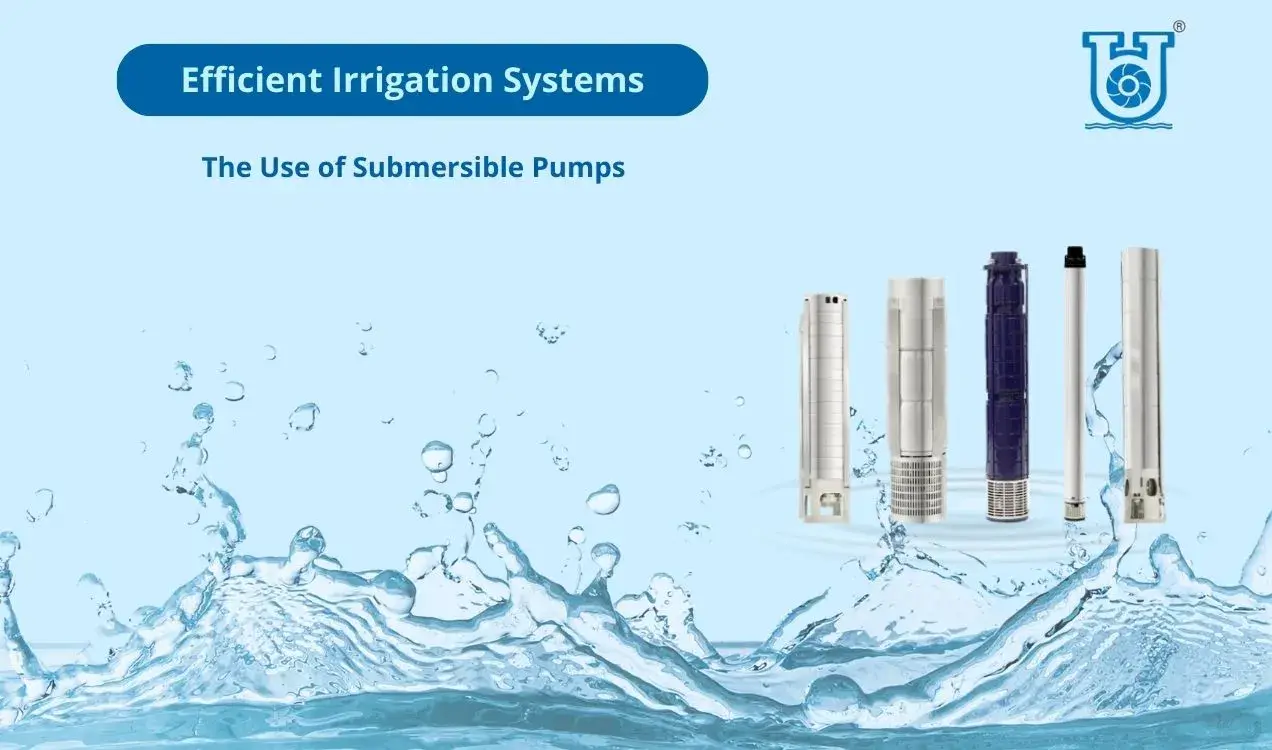Efficient watering systems are important for healthy farms and the best crop growth. Submersible pumps serve a critical role in ensuring the proper spread of water to crops, gardens, and fields. They provide a reliable, energy-efficient, and space-saving option for watering systems. Submersible pumps are known for their energy efficiency since they are built to fit the fluid factors of the application.
This promises maximum performance while reducing power usage, resulting in reduced running costs and a better approach to watering. Proper size and placement are important for getting maximum efficiency and stopping excessive energy waste. Innovative technology and methods add to healthy agriculture and a better future.
Benefits of Submersible Pumps
- 1. Submerged efficiency: It eliminates the need to start the pump and eliminates the possibility of pump noise.
- 2. Energy efficiency: Reduces energy usage and costs, since water pressure pushes the water into the underwater pump, saving a lot of the pump’s energy.
- 3. Space-saving: Compact form and quick installation, making them ideal for many situations, including farming and household watering.
- 4. Quiet operation: Minimizes noise pollution, since submarine pumps are quiet due to being beneath.
- 5. High dependability: Long lifetime and limited maintenance, since the airtight seals and efficient design add to their reliability and low maintenance costs.
How Submersible Pumps Work
Submersible pumps are important for effective fluid control, particularly in farming and home watering. These pumps are positioned in wells, boreholes, or sumps, and they function by pushing water to the surface, giving a reliable and effective choice for watering needs. Their buried efficiency removes the need for starting and lowers the chance of pump cavitation, providing speedy and efficient operation.
Submersible pumps are noted for their energy economy, since they utilise the head of the liquid in which they are submerged to work, resulting in lower energy usage and costs. Their small form and easy placement make them space-saving and helpful for diverse conditions. Additionally, submersible pumps run quietly, reducing noise pollution, and they are very reliable, with a long lifetime and minimal upkeep needs. These qualities make submersible pumps a perfect choice for irrigation, providing efficient and effective water distribution for farming and home uses.
Pump Sizing and Selection
Proper pump size and selection are important for gaining maximum efficiency and minimising unnecessary energy waste. To pick the most efficient pump for the purpose, it is important to determine the needed flow and head for the best performance. End-users should determine the quantity of water to be applied during the peak time by increasing the size of the field by the amount of water in inches that must be applied.
The number is then changed to gallons per minute (gpm), and this figure describes the size of the pump. It is also important to consider water loss and water needed by the plants. The pump must be matched with the needs of the water source, delivery system, and watering equipment. The most efficient pump for the purpose should be chosen to decrease energy waste and save energy costs. Ultimately, the most crucial component of pump size is getting exact and detailed information for each job.
Types of Irrigation Pumps
- 1. Surface Centrifugal Pumps: Commonly used for irrigation, pulling water from ponds, lakes, streams, and wells. They are budget-friendly, quick to install, and give a steady flow rate.
- 2. Submersible Pumps: Fully submerged in the water source, perfect for coastal homes or those with water features. They are recognised for their energy economy and are simple to install.
- 3. Turbine/Jet Pumps: Can be put both above ground and underground, usually worked with wells, lakes, or ponds. They are driven by electrical energy and may be utilised when the water source level is low.
- 4. Propeller Pumps: Provide high volume and flow rate, and may be positioned in a vertical, horizontal, or angled position. They are known for their huge flow capacity and do not have to be filled.
Wrapping Up
In conclusion, submersible pumps offer a dependable, energy-efficient, and space-saving choice for watering systems. Proper size and positioning are vital for attaining optimum efficiency and preventing excessive energy waste. Innovative technologies and approaches contribute to healthier agriculture and a brighter future.
Submersible pumps provide the efficient dispersion of water to crops, parks, and fields, offering perfect agricultural development and sustainable agriculture. They also aid in responsible water management, because they are supposed to be energy-efficient and reduce water waste.
Finally, submersible pumps function silently, eliminating noise pollution, and are recognised for their high sturdiness, long lifespan, and minimal maintenance demands, providing sustained operation with little care. These properties make submersible pumps a safe, efficient, and cost-effective solution for irrigation and other pumping needs.


